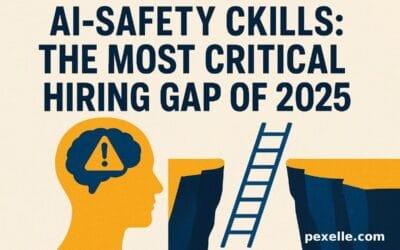The Rise of Automation: How AI is Transforming the Workforce

In today’s rapidly evolving digital landscape, automation is no longer a futuristic concept. Thanks to the advent of Artificial Intelligence (AI), automation is now at the heart of major industries, reshaping jobs and altering the traditional workforce.
What is Automation?
At its core, automation refers to the use of machines, software, or AI to perform tasks that were once carried out by humans. While automation has been around for decades, AI-powered automation introduces new levels of intelligence and adaptability to processes, making it more efficient, precise, and scalable.
How is AI Powering Automation?
AI is not just about replacing repetitive tasks—it’s about enhancing decision-making, improving accuracy, and increasing efficiency in sectors like manufacturing, healthcare, finance, and beyond. AI-driven automation enables systems to:
- Analyze large datasets faster than any human could.
- Identify patterns and trends in real-time.
- Make predictive decisions based on historical data.
- Automate routine tasks like data entry, customer service responses, and even some types of content generation.
The Benefits of AI Automation
- Increased Productivity: By automating repetitive and time-consuming tasks, businesses can focus human resources on more strategic and creative efforts, driving productivity.
- Cost Efficiency: Automation reduces the need for large, repetitive labor forces. Machines and AI-powered software can work around the clock without requiring breaks, salaries, or benefits.
- Higher Accuracy: Human error can be costly, but automated systems work with a level of precision that’s hard to match. This is especially beneficial in sectors like finance and healthcare where mistakes can have severe consequences.
- Scalability: AI automation can easily scale operations, handling growing volumes of data or customer interactions without the need to hire more employees.
The Impact on the Workforce
One of the biggest concerns surrounding AI and automation is the potential loss of jobs. It’s true that certain low-skill, repetitive roles may diminish. For instance, data entry, basic customer service, and routine manual tasks are becoming increasingly automated.
However, AI is also creating new opportunities. Jobs focused on AI maintenance, system oversight, and the development of automated solutions are emerging. More importantly, automation is freeing up humans to focus on tasks that require critical thinking, creativity, and emotional intelligence—skills that machines are still far from mastering.
Key Industries Benefiting from Automation
- Manufacturing: AI-driven robots and machinery can assemble products with incredible precision and efficiency, minimizing human intervention in assembly lines.
- Healthcare: AI is streamlining administrative processes like scheduling, billing, and patient records management. It’s also making waves in diagnostics, assisting doctors in identifying diseases early through automated image analysis.
- Finance: From automating fraud detection to personalizing customer financial advice, the finance industry is leveraging AI to improve both efficiency and customer satisfaction.
- Retail: AI chatbots, inventory management systems, and personalized recommendation engines are transforming the retail experience, allowing companies to scale customer service while reducing costs.
The Future of Automation
The rise of AI-powered automation is inevitable, but it doesn’t have to be something we fear. It’s an opportunity to reimagine how we work, focusing on what makes us uniquely human—our creativity, emotional intelligence, and problem-solving skills.
The key will be in upskilling the workforce, ensuring that employees are equipped with the tools and knowledge to thrive in a future where automation is more prevalent. As automation continues to evolve, it will likely serve as a powerful partner in enhancing human capabilities rather than replacing them.
Conclusion
Automation, driven by AI, is transforming industries by increasing efficiency, reducing costs, and unlocking new possibilities. While the workforce will experience significant shifts, those who adapt and embrace this change will find new roles and opportunities. In this AI-powered future, humans and machines can work together to create more innovative, dynamic, and resilient workplaces.
Source : Medium.com




